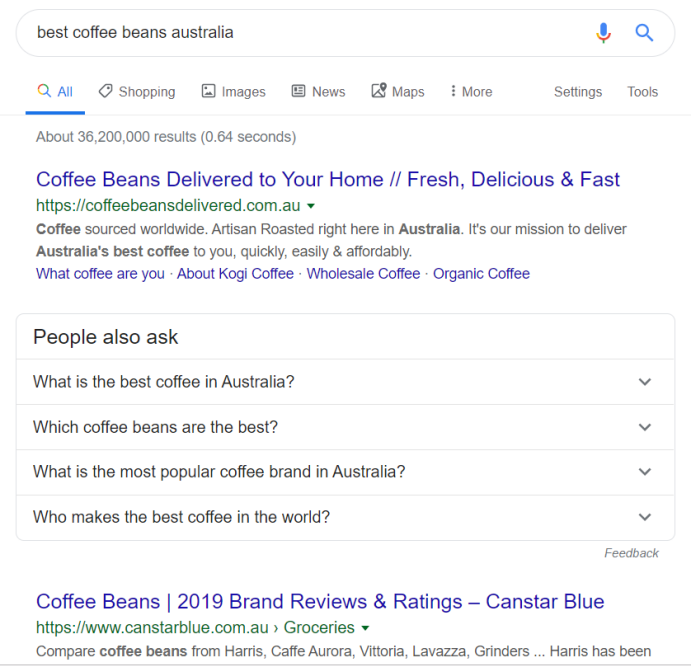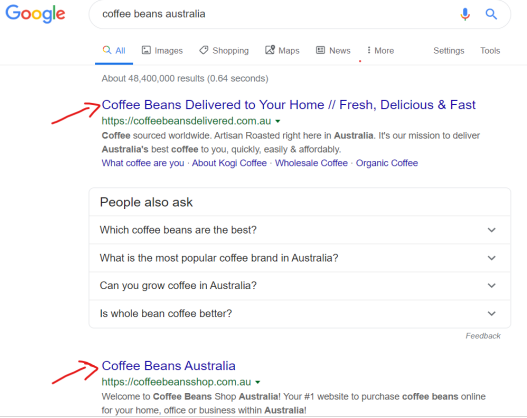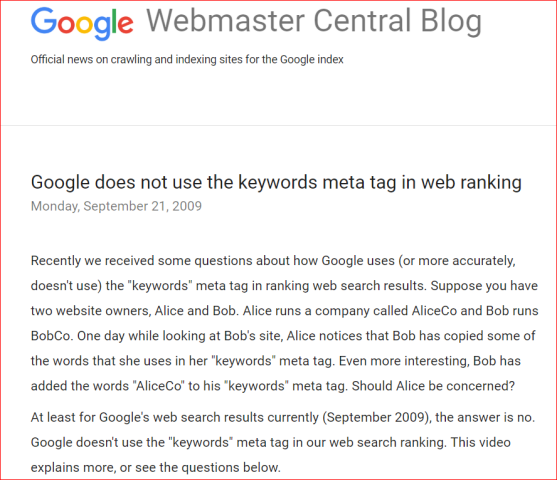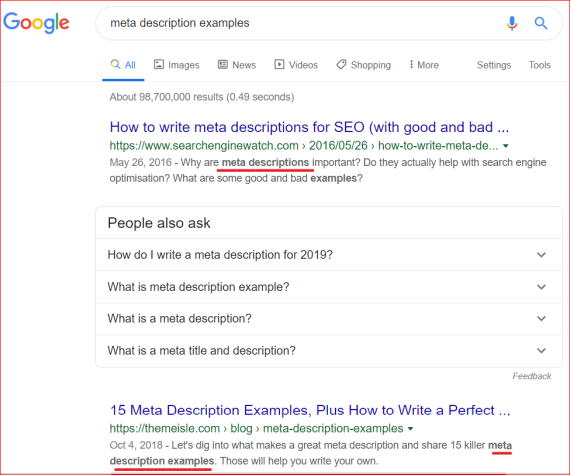A Beginner’s Guide to What Is SEO And How Search Engines Work?

Search Engine Optimization or SEO is a process of applying specific actions and methods to help your website rank higher on search result pages (SERP) and attract qualified traffic to your website.
In other words, SEO involves making some changes to your website, such as on-page, off-page, and technical optimization so that your website looks worthy to the search engines to rank higher and looks more attractive to the users to not only click but stay longer on your website.
Why is SEO important?
One of the most frequent questions we receive at Digital Masters Hub from our clients is: what is SEO? And whether it is necessary to do SEO for their websites?
First of all, by default, higher ranking means more visibility for your website. More visibility means visibility of your business online when people are actively looking for the products or services that your business offers. And of course, more visibility means more traffic and thereby, generate more revenue for your business!
“ On average, Google receives over 63,000 search queries, every second! ”
In an era where technology is advancing at an exponential rate, customers are also adapting and evolving in the ways that they make buying decisions.
Nowadays, businesses need to show up on customers’ mobile or laptop screens when they are searching for products or services.
Businesses need to stay continuously visible online and attract a steady stream of traffic in order to increase or even maintain revenue.
“No website can stand without a strong backbone. And that backbone is SEO.”
– Neil Patel
In recent years, the SEO industry has experienced massive growth. More and more businesses have adopted SEO services to stay in the competition and maximize their brand’s footprints online.
By 2020, the SEO industry is expected to reach a whopping value of approximately $80 billion!
However, if you are new to the world of SEO, and wondering what is SEO and how to learn it step-by-step, here is a detailed guide for you that will answer all of your basic questions around SEO.
How does SEO work?
For anyone to be able to appreciate and understand what is SEO, one needs to understand how the search engines work?
As Google accounts for 88.61% market share and is a strong search engine market leader, we will discuss Google search engine optimization.
“Some say Google is God. Others say Google is Satan. But if they think Google is too powerful, remember that with search engines, unlike other companies, all it takes is a single click to go to another search engine.”
– Sergey Brin, co-founder, Google
A search engine works based on a software system that responds to your search query with a web page that best answers to the search term that you entered in the Google search bar, from its database.
We can understand this with an analogy of a librarian. You can think of the search engine as a well-informed librarian. You go to the librarian and ask for a book on a specific subject and she gives you some books that she thinks will best help you, from the library database. This is what the search engine does in a nutshell.
Search engines do three activities to come up with the results that you see on the search result pages.
Crawling:
As the word suggests, the search engine sends millions of spiders or bots (small software bundles) that crawl web pages and various sections of web pages. They scan the elements, such as keywords, content, images, videos, hyperlinks, headings, subheadings and more to detect suitable content to the user’s search term.
Indexing:
Once crawling is completed, search engines start to index the pages and catalogue them into the database as per their category or content topic.
Indexing is the most important factor that determines whether your website will show up at all.
Ranking:
Ranking takes place when one searches for a term and search engine returns the results in response. The ranking of a web page is decided based on the relativity to the search term and the ranking factors or how a web page is optimized for SEO.
So, for example, if you search for the term ‘best coffee beans Australia’ Google will show you the best results around your query from its database of web pages that are crawled and indexed by the search engine bots.

Now, you must be wondering, how does Google decide which website to place the first, the second, on the first page, on the second page or whether on the 10th page!
What are those factors that one needs to optimize on a website?
Here comes the SEO (Search Engine Optimization) in the scene.
There are hundreds of ranking factors that the Google search engine considers when ranking a website.
You cannot possibly keep track of all the ranking factors, but there are some essential optimizations that you can do to improve your search ranking.
Let’s discuss those essential ranking factors one by one.
Factors that affect website ranking
There are many activities that you can perform on your website and off-website to optimize the search ranking. We will discuss the most essential and most effective of them; on-page as well as off-page ranking factors.
On-page SEO
On-page SEO involves having your website found and indexed by Google bots. And providing the right signals to the bots that they understand what your page is all about.
When Google bots scan your web pages, they are looking for some signals to understand a webpage and thereby to decide the ranking.
Optimize the title tag for SEO
Title tags tell the search engine as well the users what is your page about and it appears on the search result page as the main title in blue color:

If your page is about ‘coffee beans’, your title tag should use this keyword (will discuss keywords in a while) in the title tag. The title tag should be no longer than 70 characters.
Your title tag should not be written just for Google bots; you must consider it from a user’s point of view. Before writing the title for your web page, think from the users’ perspective. Users should find it interesting enough to click on it.
Optimize The Meta Description
The meta description is a snippet that appears under the website URL on the SERP.
The meta description is not as important as the meta title from an SEO point of view. In fact, Google had announced that they do not pay much attention to the meta description or meta keywords.

But, does it means that you should not care about meta description at all?
No, you cannot completely ignore the meta title, here is why…
The meta description should be written and optimized to attract more clicks. It is your pitch to the users to make them click on YOUR website instead of the other results on the SERP.
Not only that, more clicks on your website eventually improves your SEO ranking. Here is how….
Suppose your website is on the 4th position on the first page of the SERP. And if users click on your site instead of the first three results, Google thinks your site is more useful to the users for the given search term and it will push your website higher. So, the meta description is your opportunity to sell your products or services, make it as attractive as you can!
Always use your primary keyword into meta description. This is because Google highlights the terms in the meta description matching with the search term, and this makes your result more clickable.
For example in the below screenshot, the terms ‘meta description’ or ‘meta description examples are bolded because they match the term in the search bar. This attracts the user’s attention because that is what they are looking for.

Heading and Subheadings
You should use headings to make it easy for users to read and understand your content well. Headings also help search engine bots understand the content better.
There are six headings and they are called H tags in SEO language. H1 tag is the main heading that you see on a web page. H1 tag is the most important from the SEO point of view and the rest of the tags are of lesser importance as per their order.
Make sure you use the primary keyword in the H1 tag.
Optimize your Page URL
Your page URL needs to be short and easy to understand.
For example, check these URL options, which one is the best?

The first one is best because it is short as well as easy to understand. The third URL is also easy to understand, but when you can have a shorter URL, you should.
On-page content and usage of SEO keywords
You need to use the primary keyword several times in your content. Especially in the beginning within the first 100 words use the main keyword once.
Be careful not to overuse the keywords, as it may penalize your website for keyword stuffing. Keyword stuffing is a black hat SEO practice.
Keep the usage of keywords at 1% of your text as a rule. It is okay if you go a little over or under that amount, just be careful not to be intentionally stuffing keywords; that will do more harm than good.
Optimize your images with Alt tags
Alt tags are the alternative text for an image for a search engine. Search engines cannot read your images, so by using the Alt tag, you inform the search engine bots what the image is all about.
Alt tags are also useful for visually impaired users who use screen readers while browsing.
If you are using images on your web page, then make sure you use Alt tags and insert a keyword in it.
Now let’s discuss keywords before we go on to off-page SEO factors.
What are the SEO keywords?
Keywords are the terms that people enter in the search engine search bar to find information.
For example, if you are looking for a guide to SEO, which terms will you enter in the search engine? The terms, such as SEO guide, SEO tutorial, or What is SEO? Etc. Right?
These terms are keywords for search engines. Once you enter the term into the search bar, the bots will look for the content around the keyword. They will search, sort and rank the results they gather from their database and display it for you on SERP (search result pages).
Now hopefully all makes sense for you!
How does the search engine know which web page talks about the term that you entered in the search bar? And why do we need to optimize keywords in meta title, headings, alt tags and so on?
Search engines match your query with the on-page SEO factors that we discussed above, to serve you the results on SERP.
But you may have a question at this point…. how do you decide which keyword to use to write your content? How do you know which keyword is better?
There are many ways you can find the keywords that people are looking for. You can also find out how competitive those keywords are and what is the monthly search volume!
The best keyword research tools that I use are Ubersuggest, Google keyword planner, ‘Google suggest’ and ‘Searches related to’ section at the bottom of the Google SERP.
You should make a list of keywords that make sense for your products or services and then go to Google Keyword Planner to know the metrics, such as competition and search volume.
Off-page SEO factors:
Off-page search engine optimization involves SEO activities outside the website. Though you do not have control over the off-page factors as you do over on-page, they are super important.
Off-page optimization mainly involves link building. That is when other relevant websites link to your website; your website earns a vote of trust in the eyes of Google. Link building is the backbone of SEO.
Each incoming link to your website is a vote of trust and passes credibility or link juice to your website. So, the more incoming links a website has, the more authoritative that site is in the eyes of Google.
Not all incoming links pass a similar amount of link juice to your website; highly authoritative site passes more link juice whereas less authoritative site passes less link juice. That is why you should consider gaining links from highly authoritative websites.
But, you need to be careful when working on link building for your site.
The website you gain a link from needs to be relative to your website. In other words, if your website is about fitness, then the incoming link also should be related to the fitness niche.
If you gain links from sites that are not related to your topic, they are called spammy links. Suppose your website is about Coffee Beans and you gain links from real estate or insurance sites your website will get penalized for gaining such spammy links.
What are the ways to build links?
Let’s discuss different tactics of link building
Guest posting:
Guest posting is a method of writing content for other authoritative sites and linking back to your site.
With this method, the other site gets valuable content, and you get a link to your site from.
When done right, guest posting can prove to be a credible link building tactic. Be careful to guest post on relative sites and highly authoritative sites.
High-quality content:
The most successful and effective way to get links it to earn them. Write highly valuable content that is credible, answers the questions thoroughly that the users are looking for, and so useful that people would like to link, share and recommend your content to others. This is a sure way to gain genuine links to your web page.
What kind of content you could create?
What kind of contents one should write so that people receive it well and link-worthy? Let’s discuss some content formats that you can write.
Also, note that the main purpose behind creating content should not be only to appeal to the search engine bots. That is focusing on optimizing on-page elements for SEO at the cost of user experience!
You should balance your approach for the bots as well as users. You should, in fact, prioritize the users while creating content. Because this will eventually serve you better for search ranking.
Blogs
A blog is an in-depth article about a topic. Blogs are very popular in the SEO industry, as they provide an opportunity to create detailed material around any topic that is useful to others and can be used to build links.
Blogs also can be shared on social media to attract more traffic to your website.
A blog should be;
- Natural and conversational in the language
- Informative, well-structured and well researched
- Able to create value for the users
- Focus on answering the probable questions around the topic
Reviews
For the topics, such as food, restaurants, tourism, films, technology, reviews are well received by the users. Reviews attract significant traffic and can establish your site as an influencer in your industry.
To write an effective review;
- Choose a popular topic.
- Well-research the topic.
- Write an honest review. (this will create your credibility)
Infographics
Infographics are a visual representation of a subject with graphics. The aim is to represent the complex idea/information simply and comprehensively so that users instantly understand the idea conveyed.
A great info-graphic should be;
- An interplay of information and design.
- Utilize images, graphs, and graphics to convey a story.
- Make it visually appealing.
- Add minimal text just to connect the dots.
How-to Guides
How-to guides, lists, and tables are highly popular because they are to the point. And users like to scan through the information rather than reading paragraphs to grasp the topic.
When creating such content format, make sure that;
- It is highly informative.
- Put forth only the most relevant data.
- Use captivating titles and headings.
- Emphasize on process/facts or storytelling to make it interesting.
Case studies
Case studies are highly regarded as they provide unique information and valuable insight into a topic. Case study format is a good opportunity for businesses to reveal interesting data and the results of freshly conducted experiments.
Case studies must;
- Provide a detailed overview of the experiments conducted.
- Include original and proved data.
- Narrate the whole experiment and the result as an interesting story.
Interviews
Interviews are an excellent way to provide in-depth information on any topic. They are interesting too as they are conversational and provide expert opinions in a way that users can easily understand.
Interview should;
- Be engaging and entertaining.
- Have well-prepared questions that are pertinent to users.
- Flow naturally.
- Be focused on a topic.
Black hat vs. White hat SEO techniques:
Before I conclude, I need to cover how you can be sure of only using the best practices for SEO.
Black hat SEO refers to the unethical practices applied to push the ranking higher.
When SEO started back in 2009, most of the SEOs were using shady tactics to optimize websites and they worked too!
But now, the same practices are penalized and one will have to pay a heavy price for adopting black hat SEO techniques. It is possible that a website may get knocked off from the entire search results!
It is always recommended that you use white hat tactics and keep your site safe.
Here are some of the black hat SEO practices that you should be aware of;
Content Cloaking
This practice refers to hiding the text into a web page so that it is not visible to the users in order to rank for some keywords. This way one can stuff keywords or links into a web page.
This was a prevalent practice in earlier days of SEO, but nowadays it is not possible and will face a heavy penalty if applied.
Link Manipulation
This involves buying links or unethically acquiring links in order to rank higher. Google is highly strict against such practices.
One should completely avoid buying or selling links. Google asks users to report such instances. Google has announced that both the buyer and the seller will be penalized.
Keyword Stuffing
Keyword stuffing refers to adding too many keywords into the content where they add no value and sound unnatural. Or stuffing irrelevant keywords in order to rank for certain locations.
Poor quality content
Content that is not original does not add any value, scrapped from another website or copied and tweaked by a bot is regarded by Google as poor quality content.
The Google Panda update stops the websites with poor quality content from ranking higher on SERP.
Conclusion
There is so much to learn when it comes to SEO, and continuous earning is only a key to master it.
The practical application of what you have learned is a sure way to imbibe everything that you learn.
I hope this SEO guide for beginners was helpful to you.
If you are looking to learn SEO step by step with the practical application of the concepts, check this SEO Training and call for a free consultation with a senior SEO Training Adviser.
Or if you are looking for a qualified team to do SEO Services for your website, or comprehensive Digital Marketing Services, book a Free consultation with us or talk to us on 0415526553
